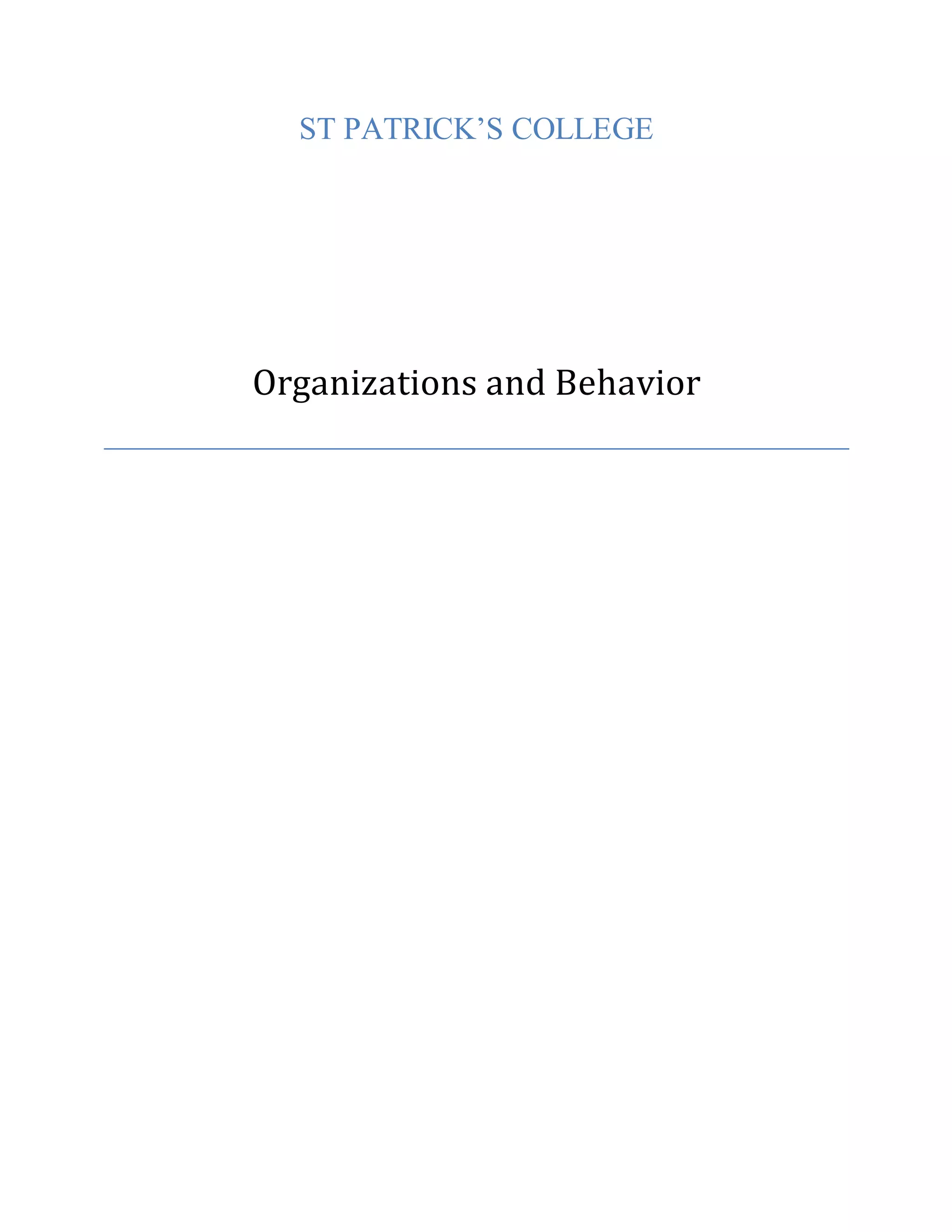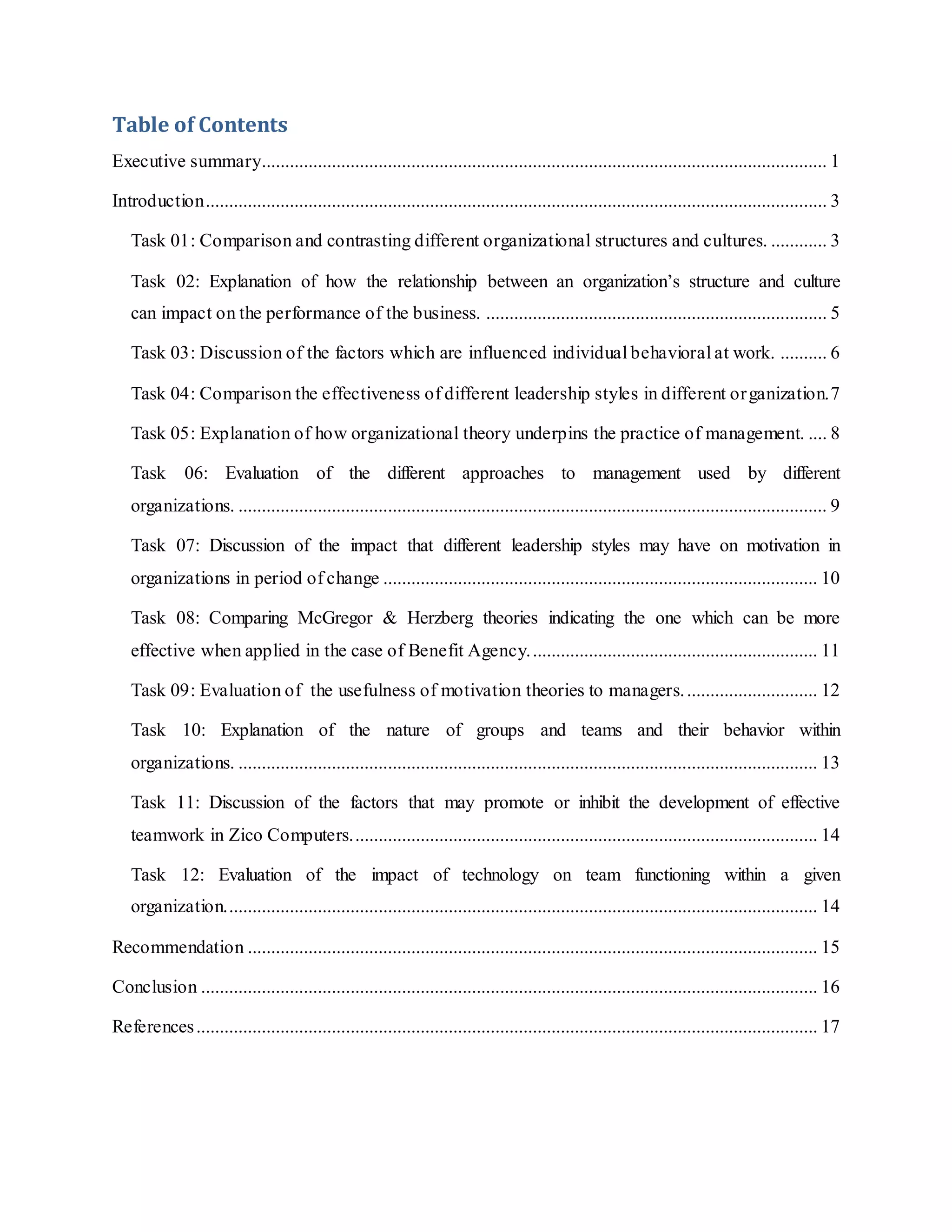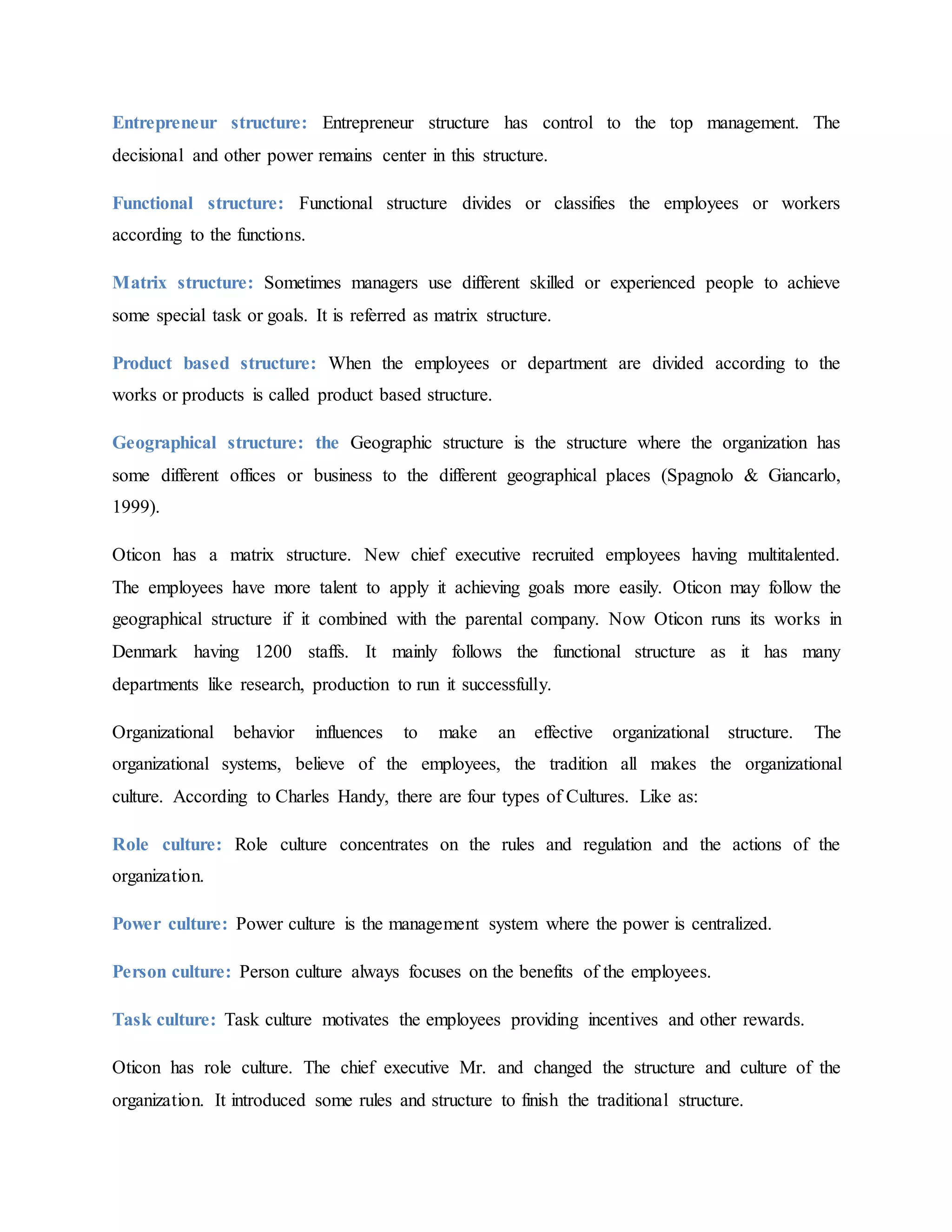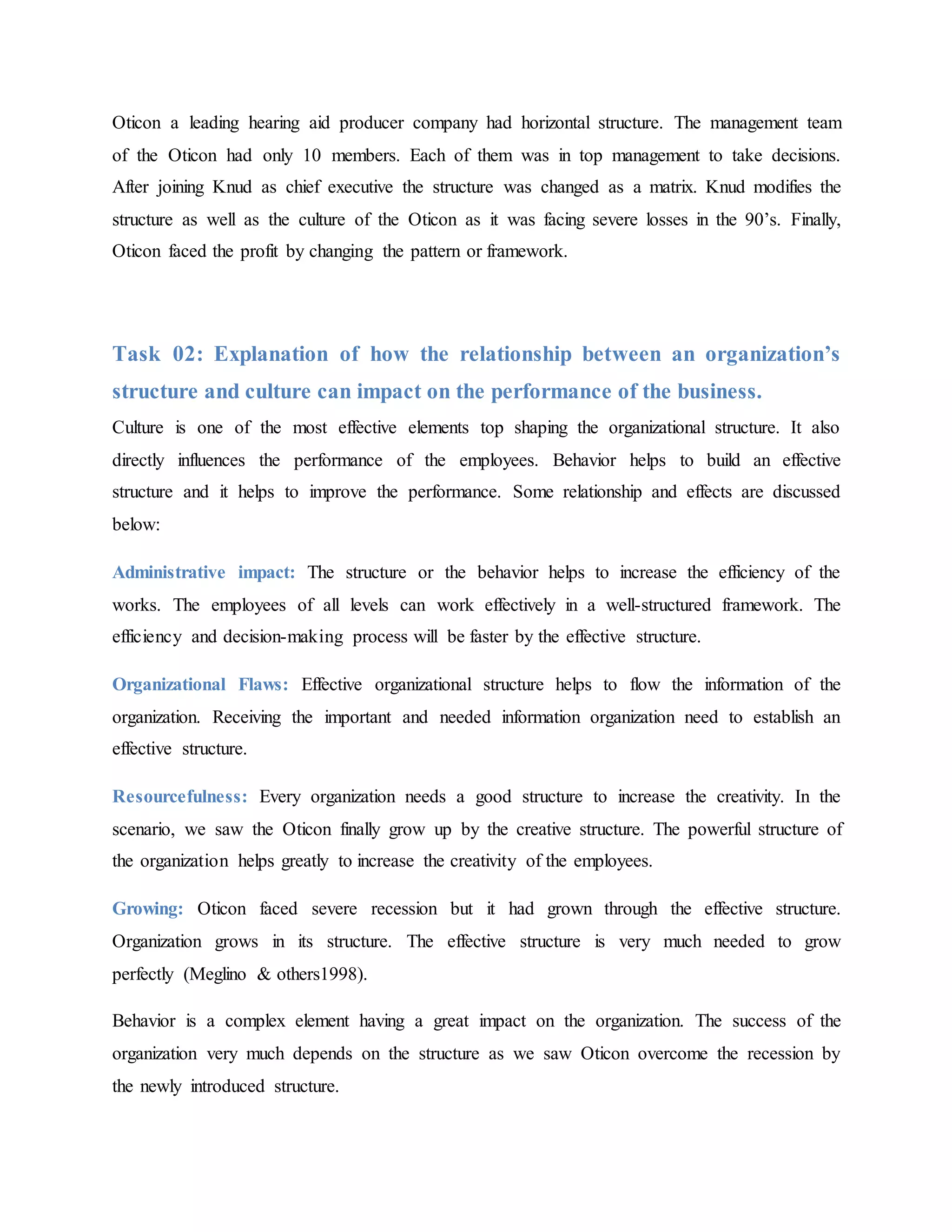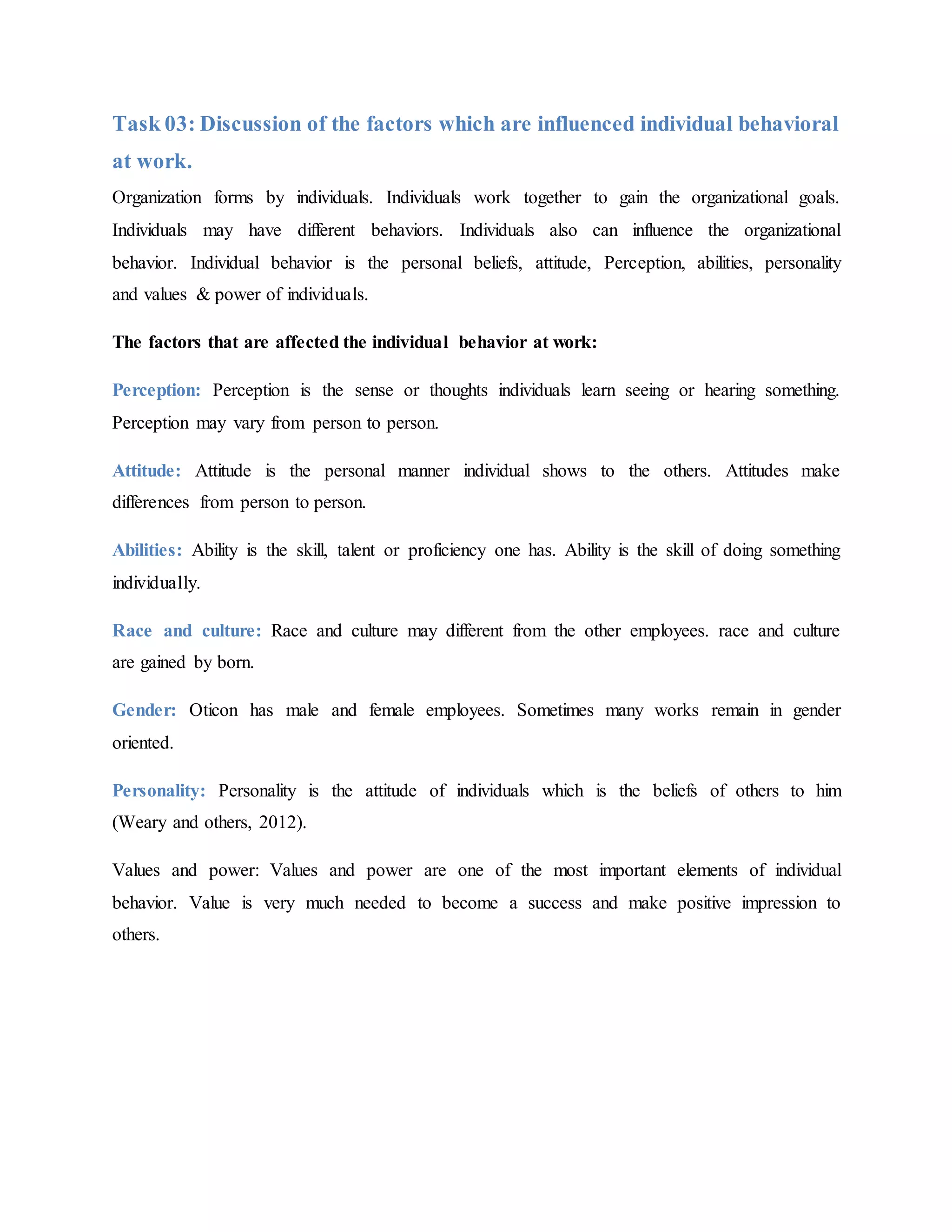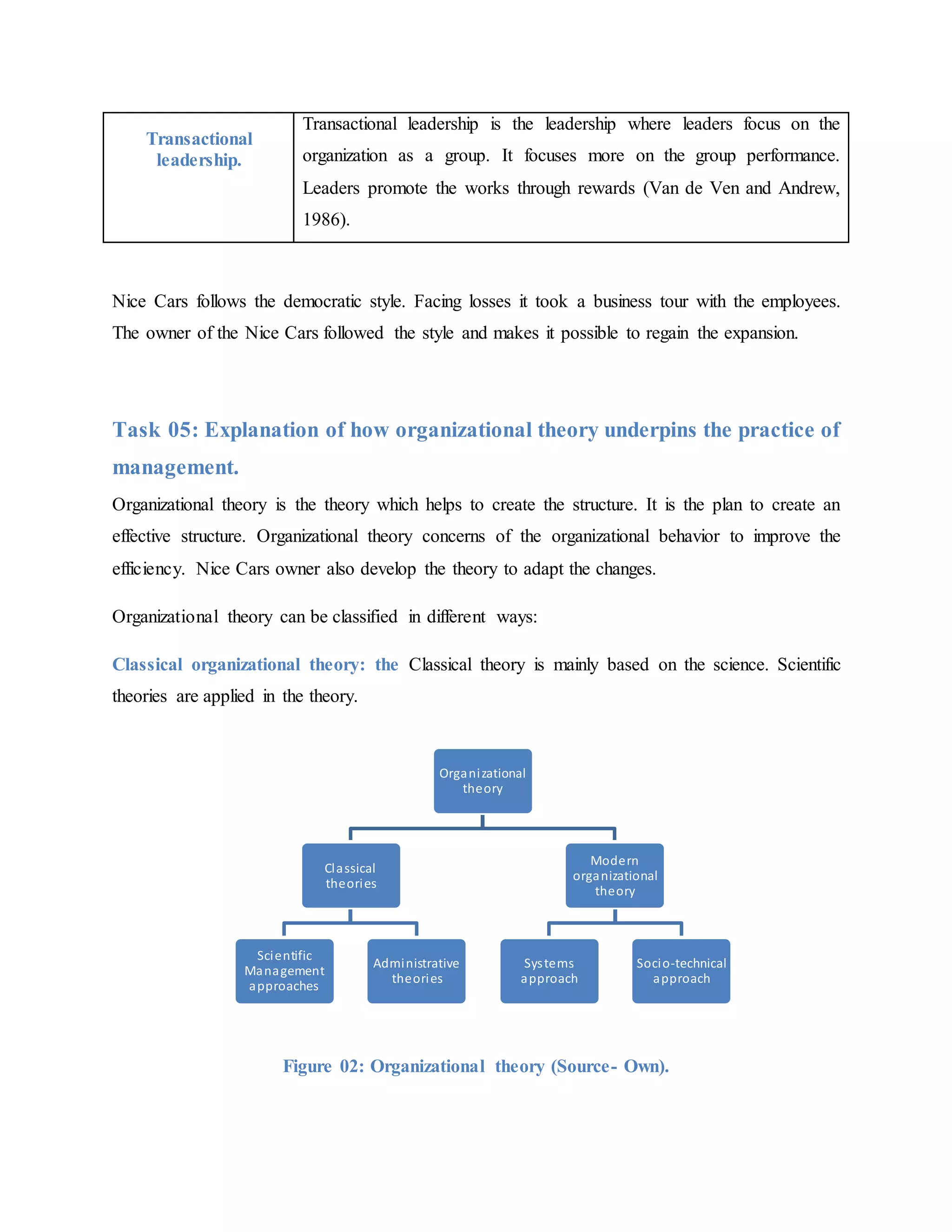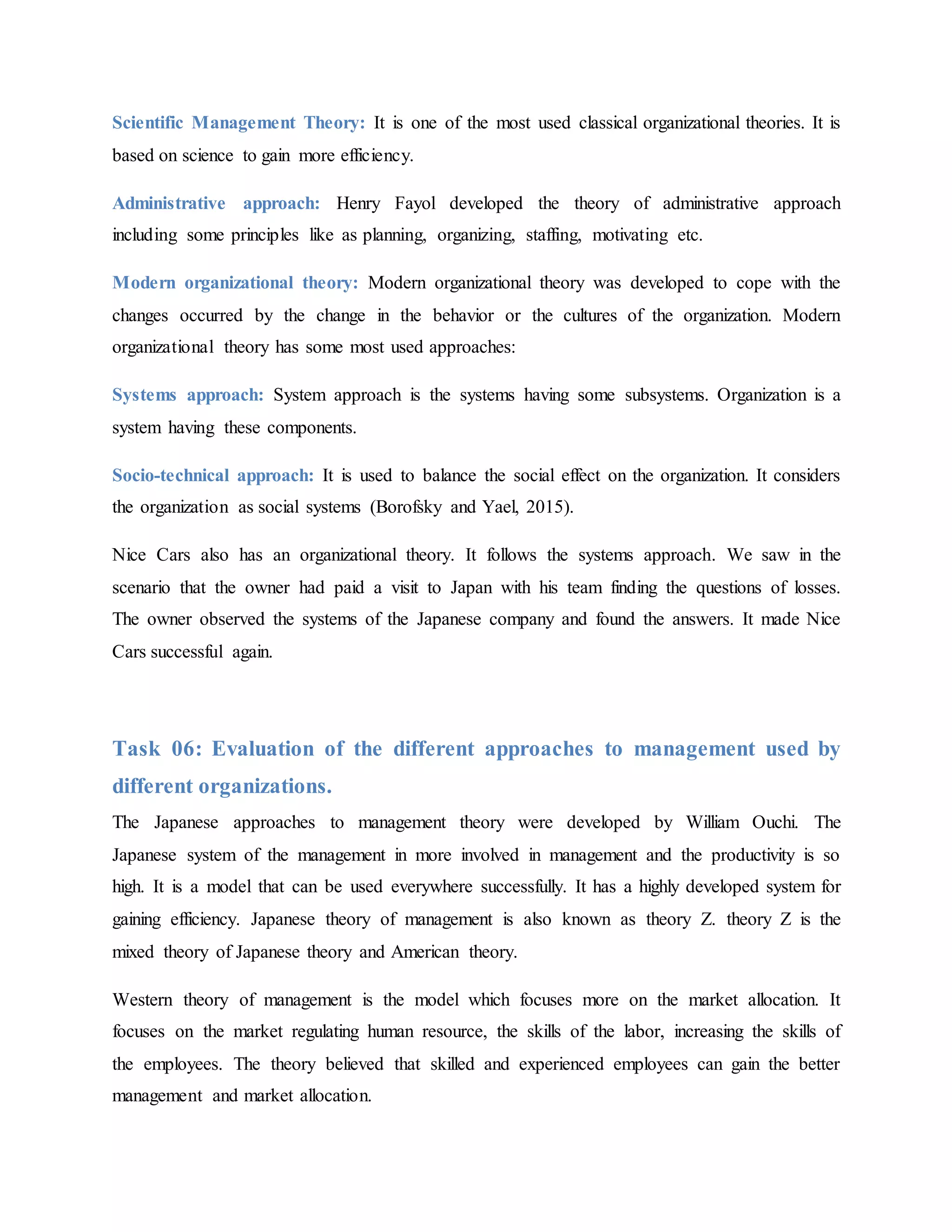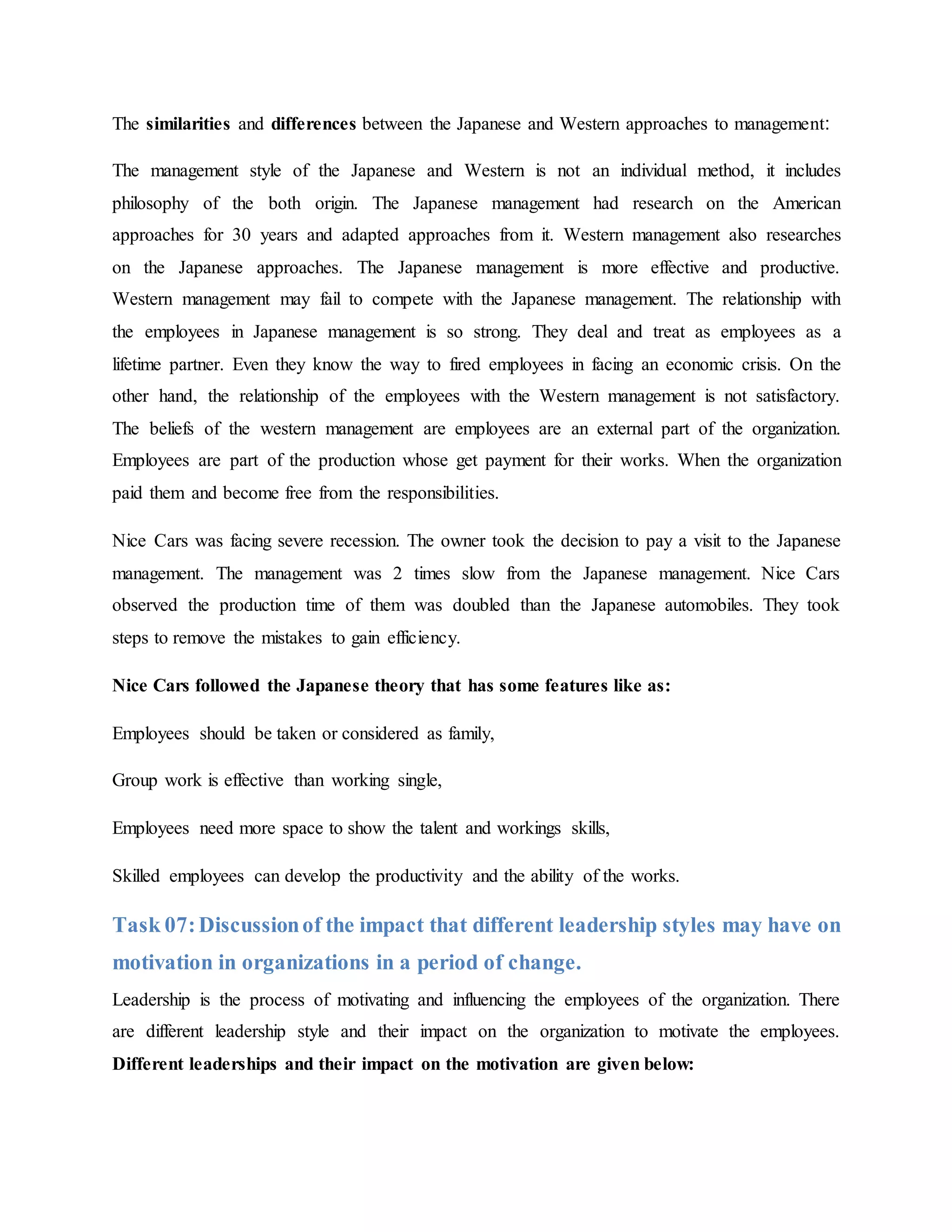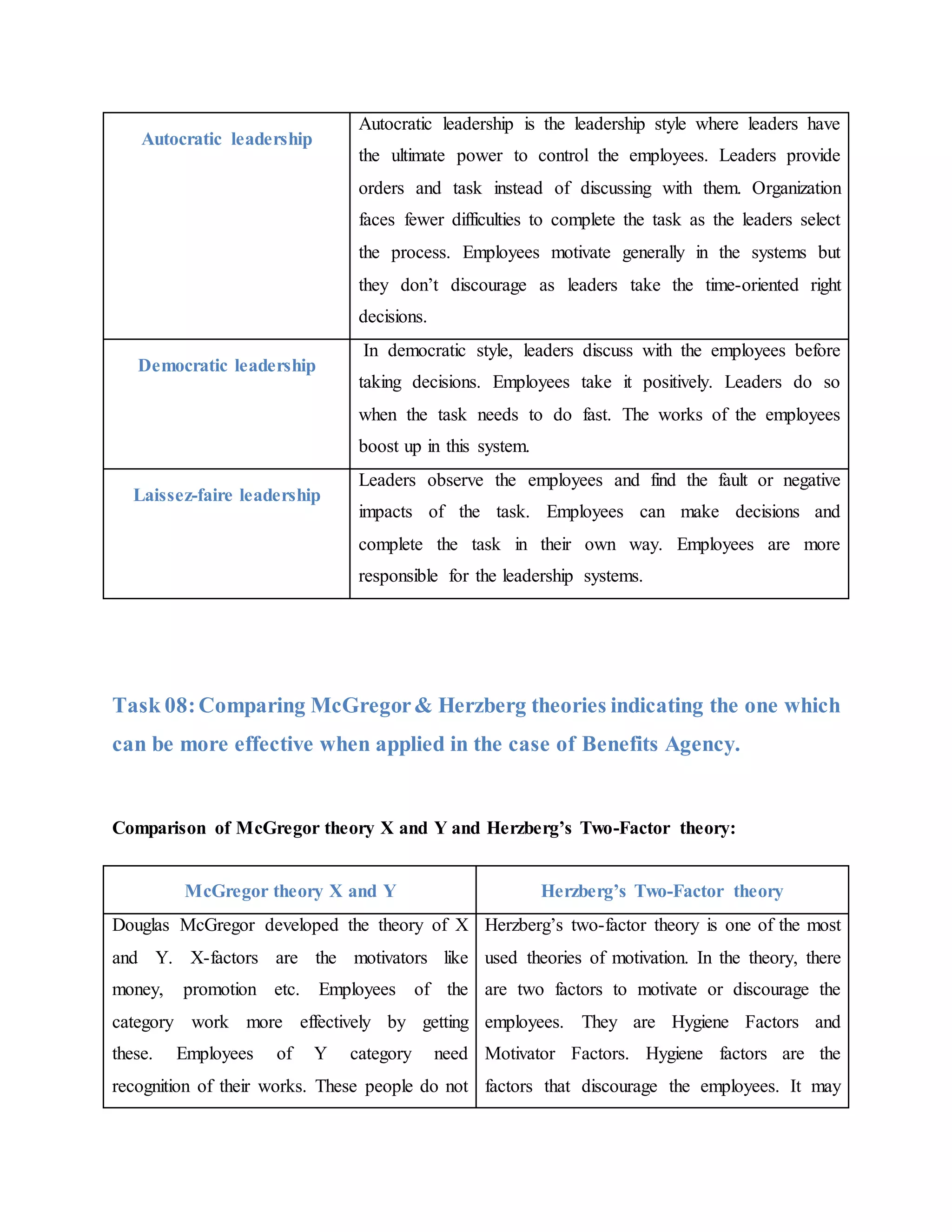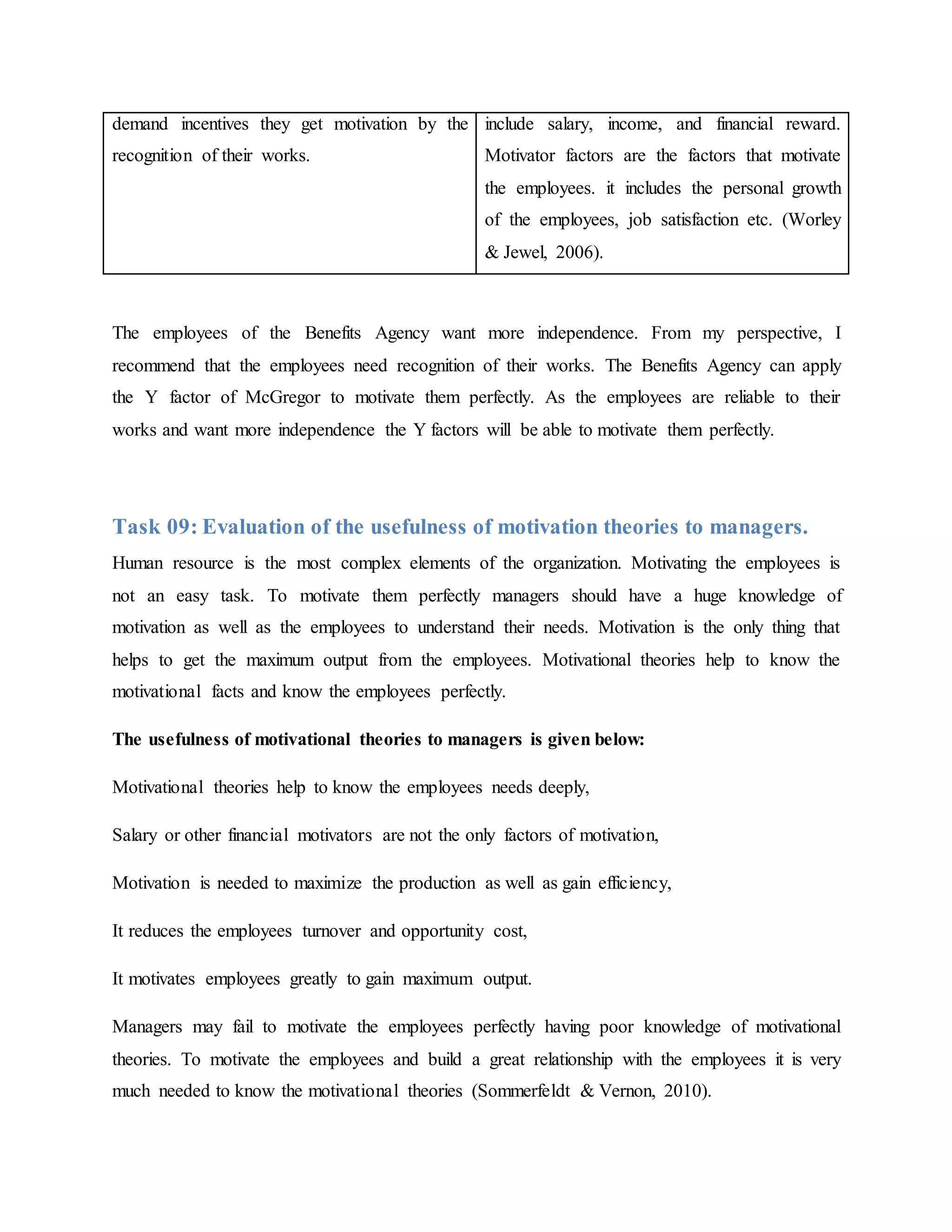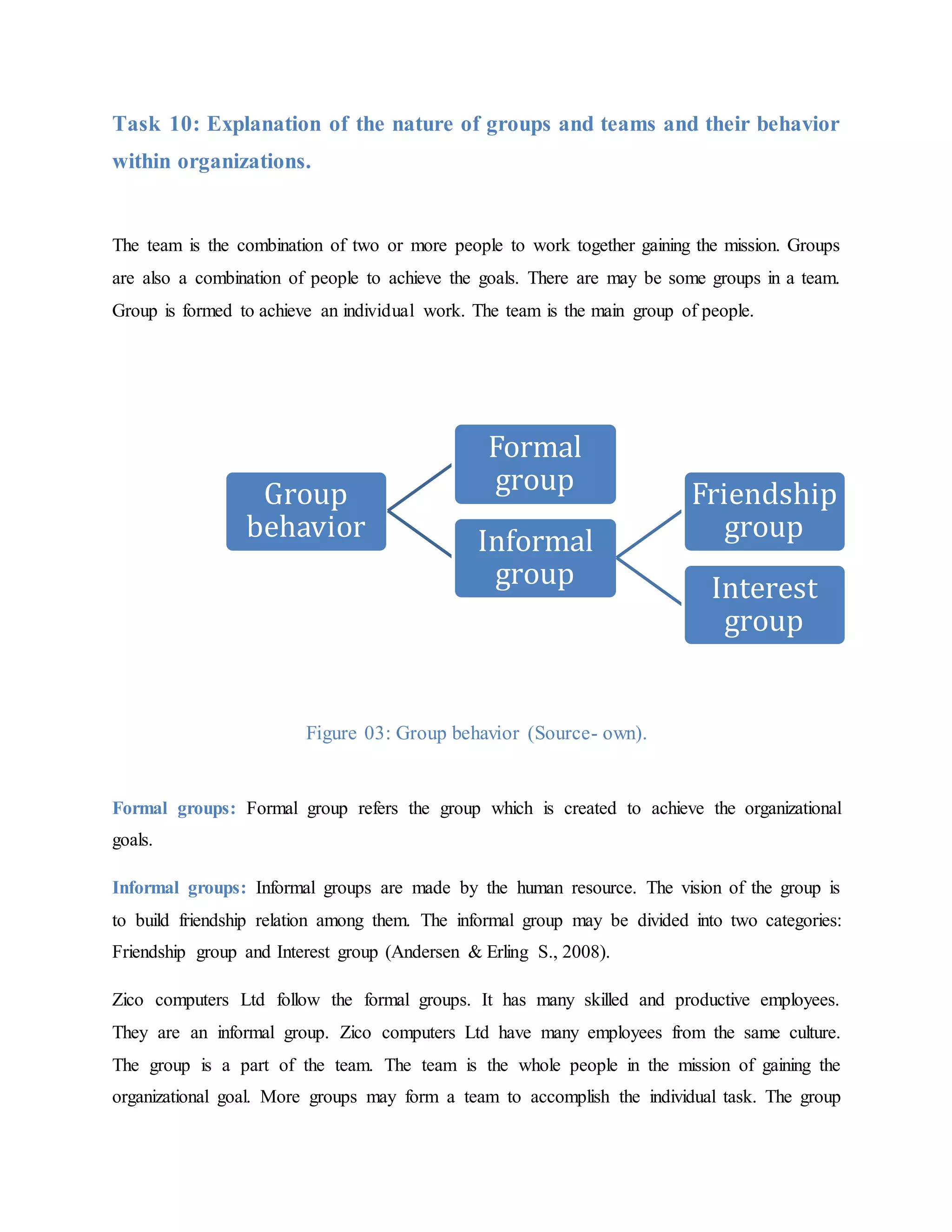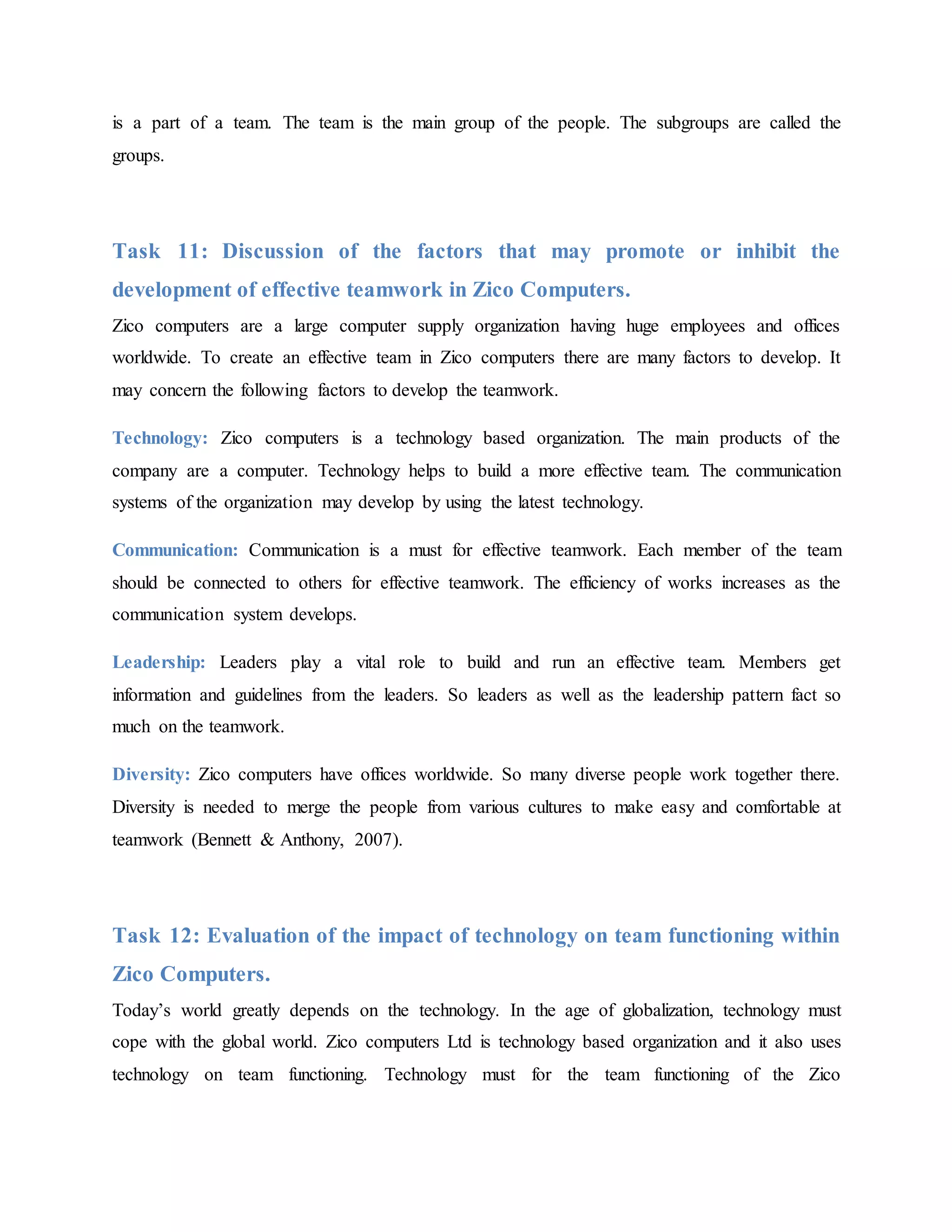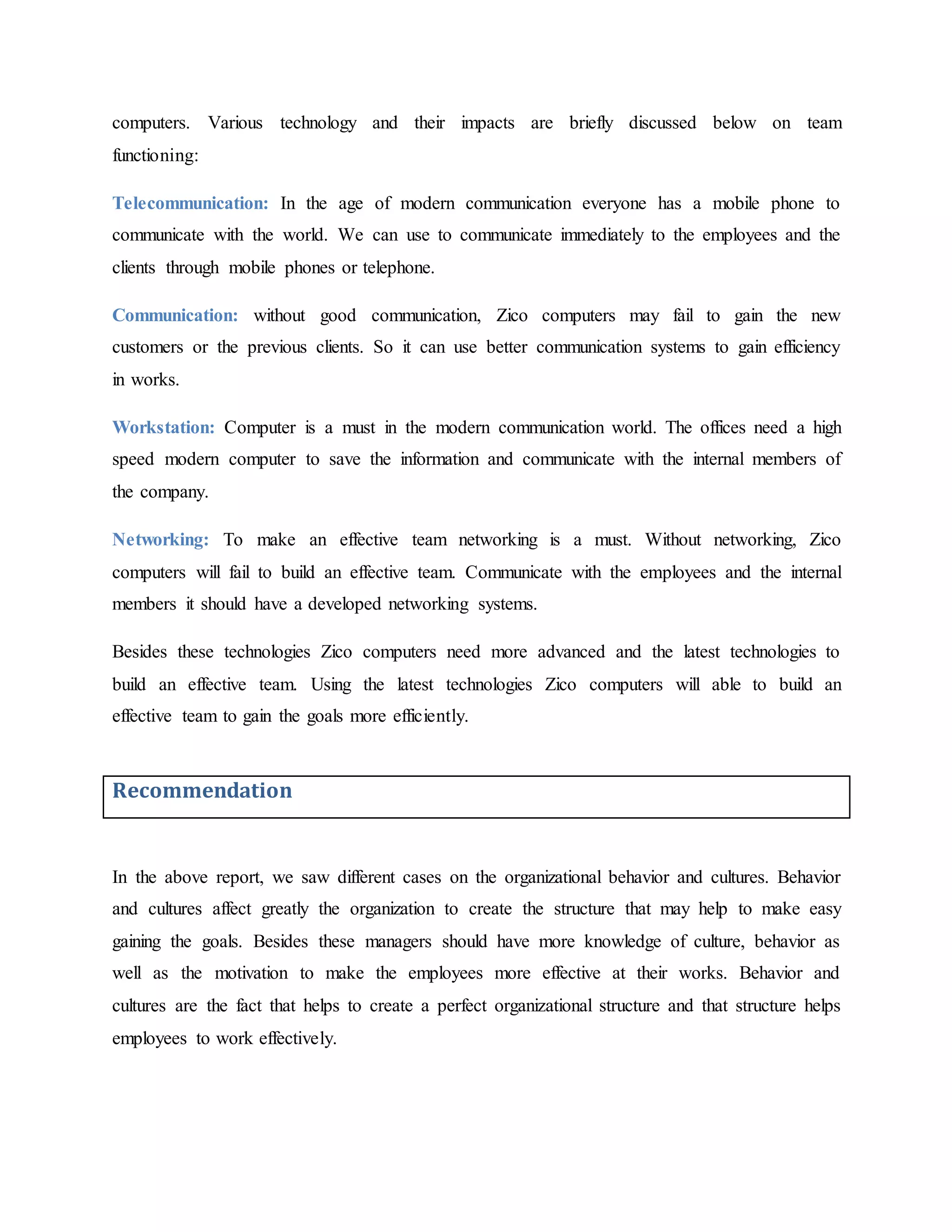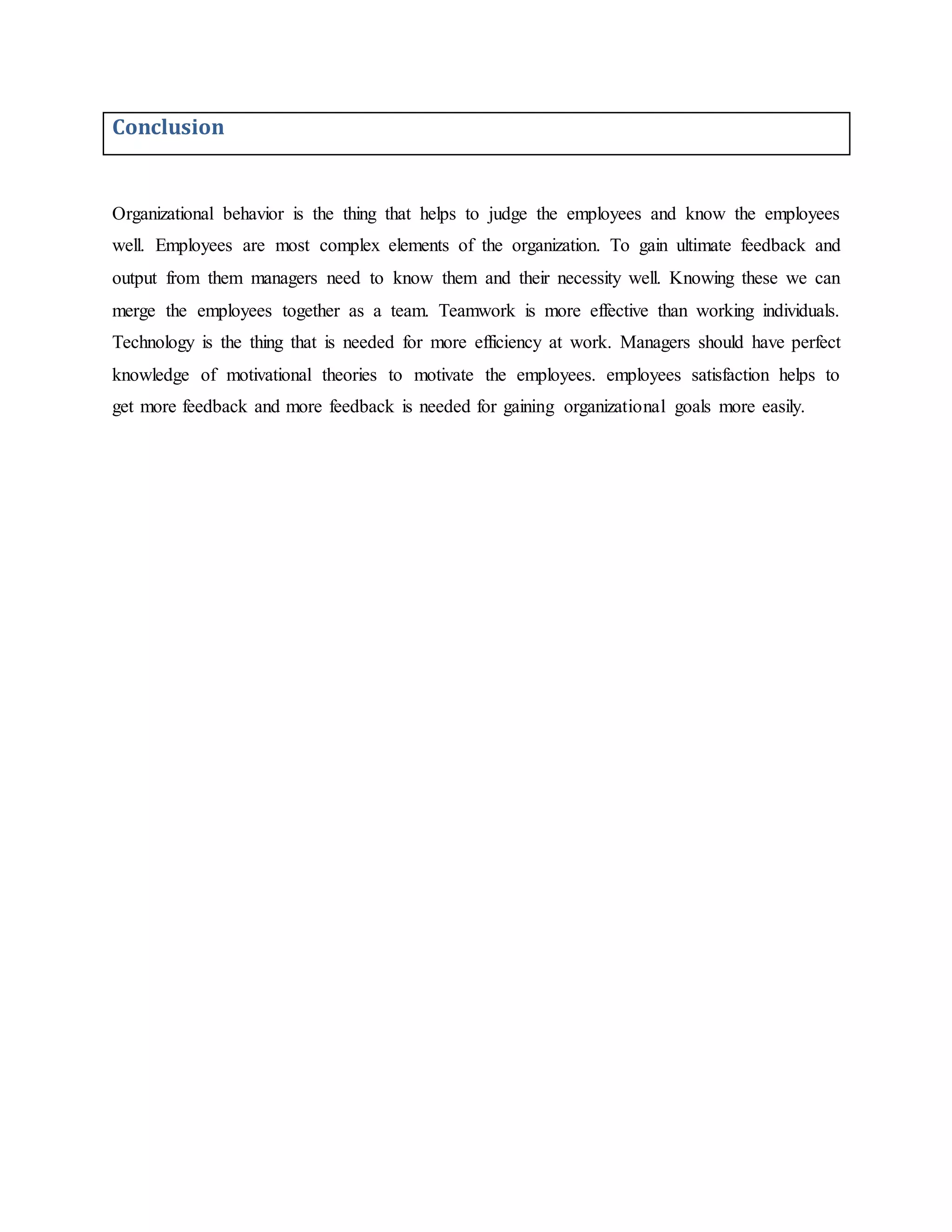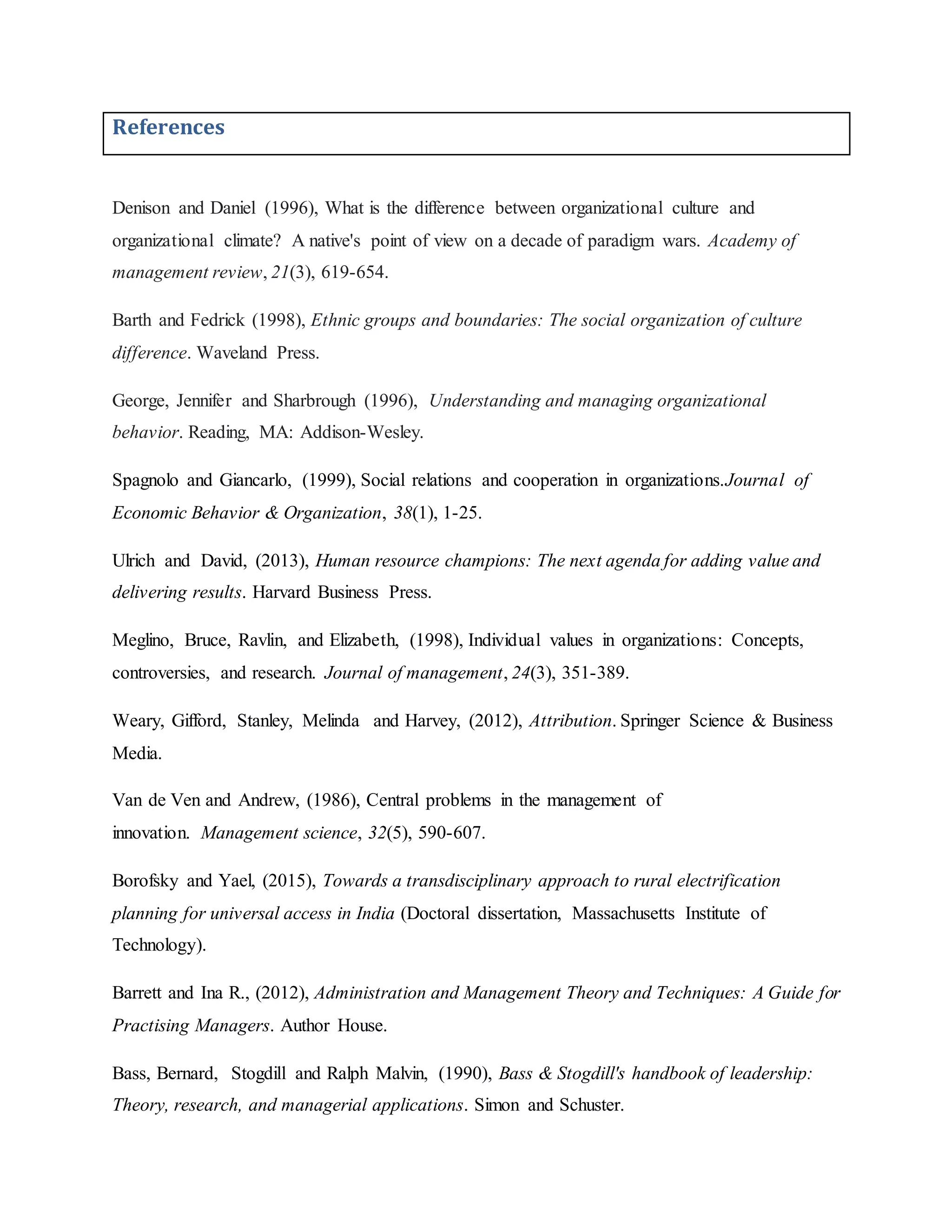This document provides an overview of organizational structures, cultures, and behaviors within different companies. It discusses Oticon, a Danish hearing aid company that changed to a matrix structure under a new CEO. It also examines Nice Cars, a company that overcame recession after observing Japanese management approaches. The document outlines tasks that analyze organizational structures and cultures, how they impact performance, leadership styles, motivation theories, and their usefulness to managers. It evaluates different approaches to management and how theories underpin organizational practices.
